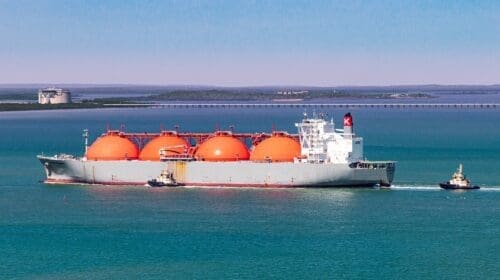Although the average price for a gallon of gasoline in Texas averaged $2.11 for the week ending June 16, according to the Energy Information Administration (EIA), gasoline prices dropped below $2 in many locations across Texas.
The national average was $2.318, a decrease of $0.048. California had the highest price at $2.996.
Diesel prices averaged $2.489 in the U.S., with the highest prices on the West Coast at $2.782 and the lowest on the Gulf Coast at $2.329.
The price of crude oil plays a significant role in determining the price of gasoline. The EIA says that 49 percent of the cost of a gallon of gasoline is composed of the cost of crude oil. Refining and tax costs make up 38 percent (19 percent each), and distribution and marketing costs are 13 percent.
Crude oil, natural gas, gasoline and diesel are all traded in a variety of markets around the world daily. One key component traders watch closely is the amount of each commodity in storage, and in the case of gasoline, the amount of crude oil being refined.
“Gross inputs of U.S. petroleum refineries, also referred to as refinery runs, averaged a record high 17.7 million barrels per day (b/d) for the week ending May 26, before dropping slightly to 17.5 million b/d for the week ending June 2 and 17.6 million b/d for the week ending June 9,” EIA said in a report issued on June 20.
“Product supplied to the U.S. market as well as inventories and exports are also at relatively high levels.”
EIA noted that refinery runs have exceeded 17 million b/d only 24 times since EIA began publishing refinery runs in 1990, and all of those instances have occurred since July 2015.
Inventories of gasoline are 2 percent higher as of June 16 compared to 2016 (241.9 million barrels compared to 237.6 million b/d).
Gasoline demand is 9.6 million b/d this year, while demand was 9.7 million b/d for the same period in 2016.
Crude oil prices have dropped roughly 20 percent since January, settling at $42.53 on Wednesday.
The Wall Street Journal reported traders started the year with optimism that oil prices were headed up on news that OPEC was going to abide by their cuts in production. The cuts, however, did not remove the oversupply of crude oil, as oil production in the U.S. increased 7 percent to 9.3 million b/d from 8.7 million b/d a year ago. Traders became even more concerned when OPEC only extended the cuts recently and did not implement deeper cuts.
Some traders have even suggested that OPEC’s announced cuts were not really cuts because they were cuts from the elevated production levels achieved in the fourth quarter of 2016. Also, new and increased production has come online from Libya and Nigeria, which is not subject to OPEC’s agreement.
The result has been a decline in gasoline and diesel prices, which has motorists smiling from coast to coast.
Alex Mills is the former President of the Texas Alliance of Energy Producers. The Alliance is the largest state oil and gas associations in the nation with more than 3,000 members in 305 cities and 28 states.












